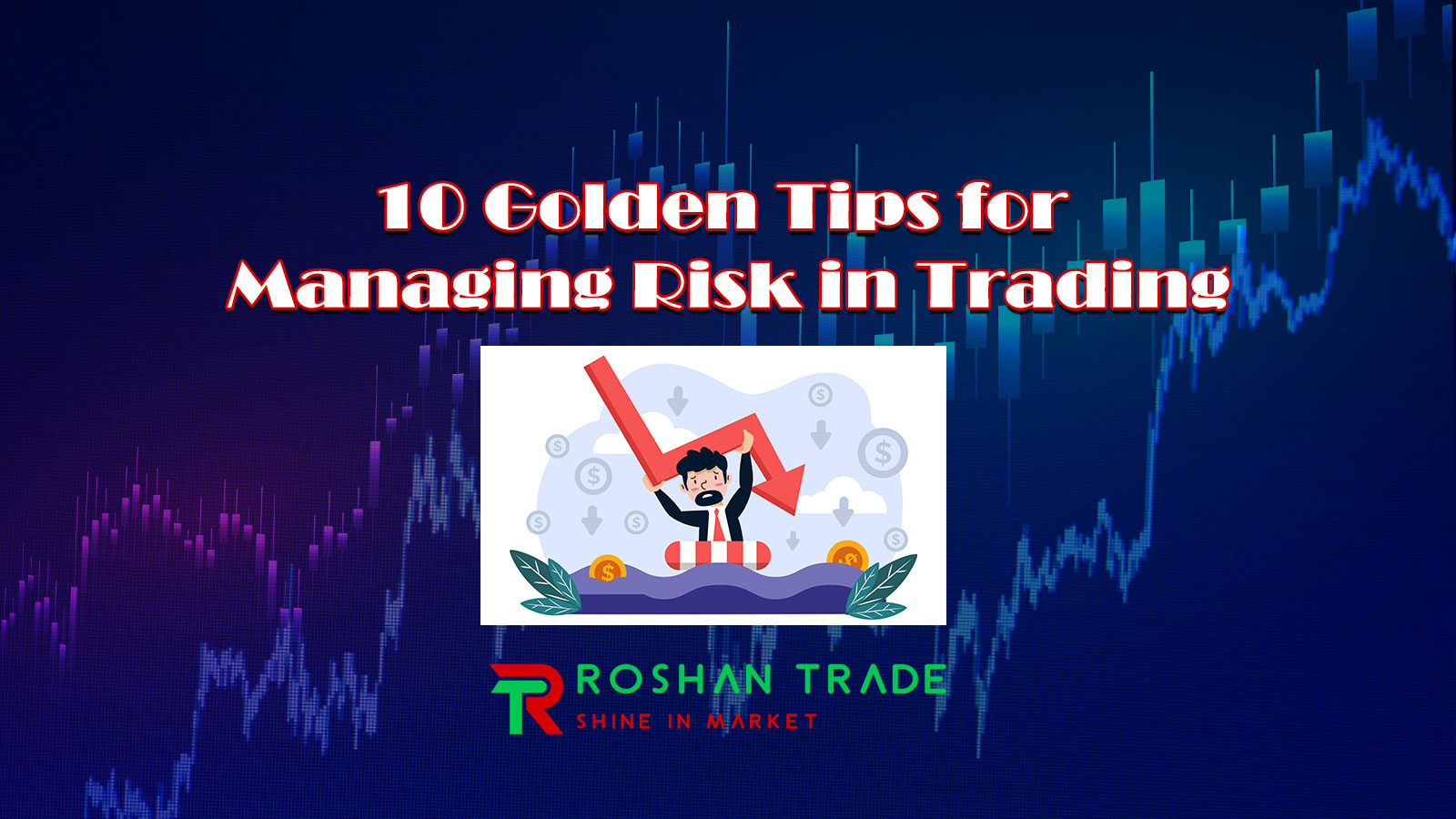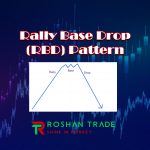Trading in financial markets can be profitable and beneficial, but just as it can yield profits, it can also be dangerous and high-risk. As a trader, you must keep in mind that risk management is as important and essential as analysis and other strategies. In this article, we will explore 10 golden tips for managing risk in trading, which can help both novice and experienced traders to avoid excessive risks and manage and reduce them as much as possible. So, stay with Roshantrade until the end of this article.
Risk management is based on four main factors:
- The trader’s reaction speed to market movements against the direction of the trade
- Analytical approach to predicting trading risk
- Separation of permissible risks from unacceptable risks
- Elimination of unjustified risks according to a clear action plan
1. Any doubts should be interpreted in favor of the market

In fact, the existence of doubt indicates that the trading plan is not as accurate and suitable as expected. If market behavior is unstable and moves beyond predictions, or if the doubts prevent the trader from acting with a calm mind, it is better to exit the market and minimize losses.
2. Excessive emotions jeopardize trading.
The inability to control emotions reflects a trader’s incompetence. Calmness and sound judgment are essential for trading in the foreign exchange market; without these, it is impossible to make reliable predictions. If you cannot control yourself and emotions overpower your reasoning, you should step away from trading temporarily. Changing activities (mentally or physically) or connecting with other traders who have succeeded in overcoming their emotions can help you in this regard.
3. The less, the better

Experience in currency trading shows that traders focusing their energy on preparing for just one trade perform significantly better than those who divide their attention among multiple goals. Qualitatively, trades conducted with complete preparation always have lower risk compared to trades driven by emotions. A lower number of trades also prevents excessive commission fees paid to brokers.
4. Defense against attack.
Whenever you enter a trade, you must be prepared for the reality that the market may move against your prediction at any moment. Before taking any action, all potential risks need to be calculated, thereby safeguarding the trade from possible losses.
Protective measures include:
- Setting stop-loss limits.
- Calculating the maximum permitted loan amount in the current position.
- Clearly defined and safe exit points from the market in line with the prior plan.
5. Trading with the trend
Trading in the direction of the trend is one way to reduce risk. When the market moves against a trend or your unsuccessful trade, it is better to use one of the aforementioned methods to mitigate risk and losses. It is also worth noting that even incurred losses contribute to gaining work experience and allow for the evaluation of performance and analysis of mistakes, thereby making you aware of methods to rectify such errors.
6. Profit and loss limits

Unfortunately, there is still no specific strategy that is completely profitable and does not issue any wrong signals. Therefore, to prevent losses from increasing, you must set a stop-loss. Limits on profits and losses help reduce trading losses. By accurately setting these levels, you can quickly exit a trade at the first signs of the market moving against your forecast. Additionally, using time-based stop-losses can help perform well in situations where you are undecided about decision-making or hesitant between different strategies.
7. Diversification of risk
Trading in the foreign exchange market can yield good profits. To prove this, you can look at the rankings of traders. The capital of most traders fluctuates dramatically. This occurs due to the strange and unpredictable characteristics of the market, where trends can suddenly become neutral, and upward movements in charts can quickly turn to downward ones. The saying “don’t put all your eggs in one basket” is not without meaning. With a specific amount of capital, it is essential to engage only a portion of it in trades while keeping a certain part as a reserve. When entering multiple trades simultaneously, the required capital for maintaining each trade must be calculated, and you should also ensure that no more than 5% of the total capital is allocated to each trade.
8. Trading systems
A trading system provides the trader with the opportunity to minimize risk through systematic and principled trading based on predictions and the use of analytical data. A trading system consists of a set of rules and parameters under which the trader is permitted to enter trades. In the forex market, traders adopt various strategies based on trading time, indicators used, risk tolerance, and prevailing trends.
9. Technical failures
To mitigate risk associated with technical failures of equipment and other non-standard situations, you can use virtual servers instead of regular computers. These servers allow remote access and control of terminal performance.
10. Broker unfairness
Most traders likely encounter fraudulent brokers in the early stages of their career. These organizations are presented as credible intermediary companies but aim to deceive individuals drawn to financial markets with the prospect of profit. Unfortunately, online trading scams are not limited to this area. Illegal actions by individual entities in financial markets have led to the emergence and reputation of companies labeled as “refund companies.” These legitimate organizations are responsible for recovering funds from “black brokers,” but 97% of these companies are themselves fraudulent. In fact, minimizing the risk of losing capital due to a broker can only be achieved by gathering preliminary information about its performance. When choosing a broker, it is crucial to carefully investigate its reputation through various methods, such as reading other users’ opinions, and then make an appropriate decision according to the gathered evaluations and priorities.
Conclusion
In the world of trading, adopting a strategy and discipline is essential for success. The mentioned points emphasize the importance of managing emotions, setting entry and exit points, and prioritizing risk management. Focusing on the 10 golden rules of risk management can help prevent unnecessary decisions and improve your trading performance. Additionally, accepting trends, setting clear profit and loss limits, and diversifying investments can protect traders against market volatility.








